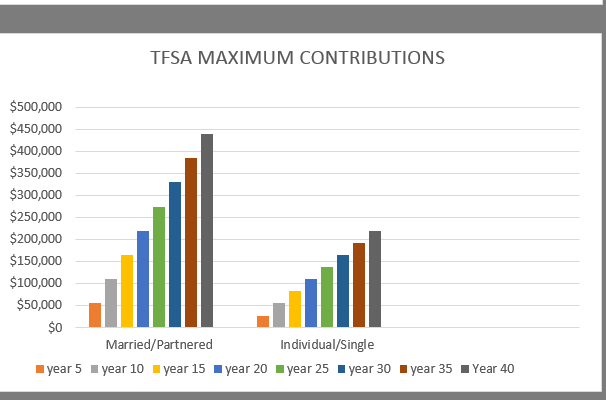MARITAL STATUS DOES NOT DEFINE FINANCIAL INTELLIGENCE
These thoughts are purely the blunt, no nonsense personal opinions of the author and are not intended to provide personal or financial advice.
In the last four posts, financial discrimination of senior singles was discussed. In addition, two reader letters and response to letters addressing assumptions of married people that singles can live with someone if they lack financial resources, and that financial problems of singles are because their lifestyles are too extravagant was discussed.
It is mind boggling as to why married/coupled people always seem to think that because they are married/coupled they have more financial intelligence and are able to manage their money better than single and divorced/separated persons. They also almost can never put themselves into the financial shoes of single and divorced /separated persons.
Singles are one the fastest growing demographics in the country, yet they are left out of financial formulas and discussions.

WHEN OUR POLITICAL LEADERS MAKE IT SOUND LIKE THE FAMILY FROM ‘LEAVE IT TO BEAVER’ IS STILL THE CANADIAN NORM, THERE ARE CONSEQUENCES FOR THE REST OF THE COUNTRY, SAY SINGLE VOTERS (quote from example #3 article).
In this post, the issue of marital status not defining financial intelligence will be discussed by reviewing three examples.
Example #1 and #2 show married/coupled persons are not any better at managing money than single and divorced/separated persons. Example #3 talks about financial misconceptions about singles.
(Financial profiles from the Financial Post are an interesting study in how persons perceive wealth. Anyone can submit an email requesting a free family finance analysis. It is interesting to note that most of the married/coupled requests for financial analysis are from relatively wealthy persons. These same requests always are requesting financial help because of worry that they will not have enough money to live and retire.)
Example #1, a financial profile of a married couple is as follows:
Calgary Herald, December 12, 2015 Financial Post “Oil Crash Forces Fix for Couple” – (this profile can be viewed in full online)
This summary is about Gary, 60 and Wendy, 67, an Alberta couple who grew prosperous with Gary’s work as a petrochemical engineer often earning as much as $200,000 a year doing consulting. However, his work is now history as a casualty of collapsed oil prices. Wendy worked as an administrative assistant earning $24,000 a year before she retired in 1990. Their income at the present time is $2,175 a month and is $3,240 less than their total monthly expenses of $5,415. They say they need to know if they can survive. The article does mention one child who is renting one of their rental properties.
Their net worth is $1,867,238. Their assets include residence $550,000, rental property #1, $460,000, and rental property #2 $430,000. Their investments include Registered Retirement Savings Plan $132,616, USA 401K in Canadian dollars $250,000, Tax Free Savings Account $39,334, non-registered savings/GICs $174,288 and two cars $17,000. Their total liabilities are two mortgages of $186,000 on rental properties.
The financial planner makes the statement:
“When Gary generated an income of $200,000 a year or more, they could afford to ignore investments, rent properties below market value and spend freely”.
The financial planner’s recommendation is get rid of money losing rental property, cut expenses and reallocate assets to cut investment costs. If they follow the planner’s advice, they should have a before tax income of about $74,000 per year. With splits of pension income and application of age and pension income splitting credits, they would pay 13 percent tax and have $5,345 a month or $64,140 annual income to spend. Compare that to reader letter#2, December 12, 215 post that suggested singles with rent or mortgage expenses can live comfortably on a middle class income of $27,000 a year.
It is interesting to note that their food budget for two people is $1,120 per month and expenses for entertainment are $220 per month. The financial planner suggests they cut their food budget by $400 and their entertainment budget by $100 per month.
Simple logic without seeking financial planner advice would imply that in order to increase their income they could sell one rental property, live on the proceeds, then sell the next rental property and live on those proceeds, and finally start taking income from their investments. They would still have their residence as collateral. With all their wealth this couple still feel they need to seek financial advice.
If one compares this example to the suggestion from the recent posts that singles can live on $27,000 per year and $200 a month for food, one wonders why this couple would have any financial worries with the wealth that they have. Also, reducing their food budget by $400 still allows them to have a food budget of $350 per person.
Example #2 is taken from a published article “Beyond the Blue Line” by the Canadian Scholarship Trust (CST).
“The report showed that approximately 66 per cent of Canadian parents have, or know someone who has, borrowed money or used retirement savings to put their children through extracurricular activities.
In contrast, 48 percent of parents have invested in a Canadian RESP (Registered Education Savings Plan).
CST reported that 43 per cent of parents said they’d borrowed money on a credit card, line of credit, personal or family loan for extracurriculars like hockey. The remaining 23 per cent deferred their retirement or used their retirement savings for extracurriculars.
More than half of Canadian parents (57 percent) said they feel every child should have the chance to play hockey if they want to, ‘because it’s part of growing up in Canada,’ CST said. The percentage represents a drop of more than 10 per cent from last year, when 69 percent said all children should be able to play hockey.
Despite the high rate of borrowing for extracurriculars, nearly half of parents said they knew someone pulling their kids out due to the cost. Thirty per cent said they, or someone they knew, regret the amount of money spent on activities like sports.”
Parents will play financial roulette with their money even though there is less than one per cent chance of their children becoming professional hockey players.
Example #3
This example is taken from the National Post June 12, 2015, : “ They are one of Canada’s fastest growing demographics, so why are politicians ignoring the single voter?” by Claire Brownell, (article is available online).
This article first talks about:
“Marcel Watier, a single 39 year old, who lives on his own in a rented basement apartment. He earns a good salary, thanks to a full time job and a part-time job on the side. He says people think he must be spending his money on stereotypical urban luxuries – dinners out, craft cocktails, a condominium with a pool and a rock-climbing wall – since he doesn’t have a partner or children. ‘They just see a single guy working two jobs and think I must be rolling in money. If I was rolling in money, would I be working two jobs?’
In addition to supporting himself, he helps his two sisters, who have eight children between them and a ninth on the way. (The article does not state why he has to do this.)
If those were his children and Walter were married, he would be eligible for a long list of tax breaks, benefits and programs. As a single person, he’s on his own. He states: It drives me up the wall to hear the whole ‘selfish single’ term.”
The word single is hardly ever used by politicians.
“The phrase ‘Canadian families’ has been spoken 5,669 times in the House of Commons since 1994″, according to OpenParliament.ca, with Conservatives (Party) accounting for almost half of those mentions.
If Canada’s singles were to get up tomorrow and decide it’s high time they stood up for themselves, they would form a formidable voting bloc. Maybe it’s time to try.”
Conclusion
The above examples show that marital status does not define financial intelligence; rather it is the belief systems, moral values, and financial values instilled throughout lifetime that define how money will be spent and saved.
It is time that singles be included in financial formulas, not just families. Instead of politicians promising things to only certain groups of citizens, they should be thinking about how to improve society as a whole.
This blog is of a general nature about financial discrimination of individuals/singles. It is not intended to provide personal or financial advice.

